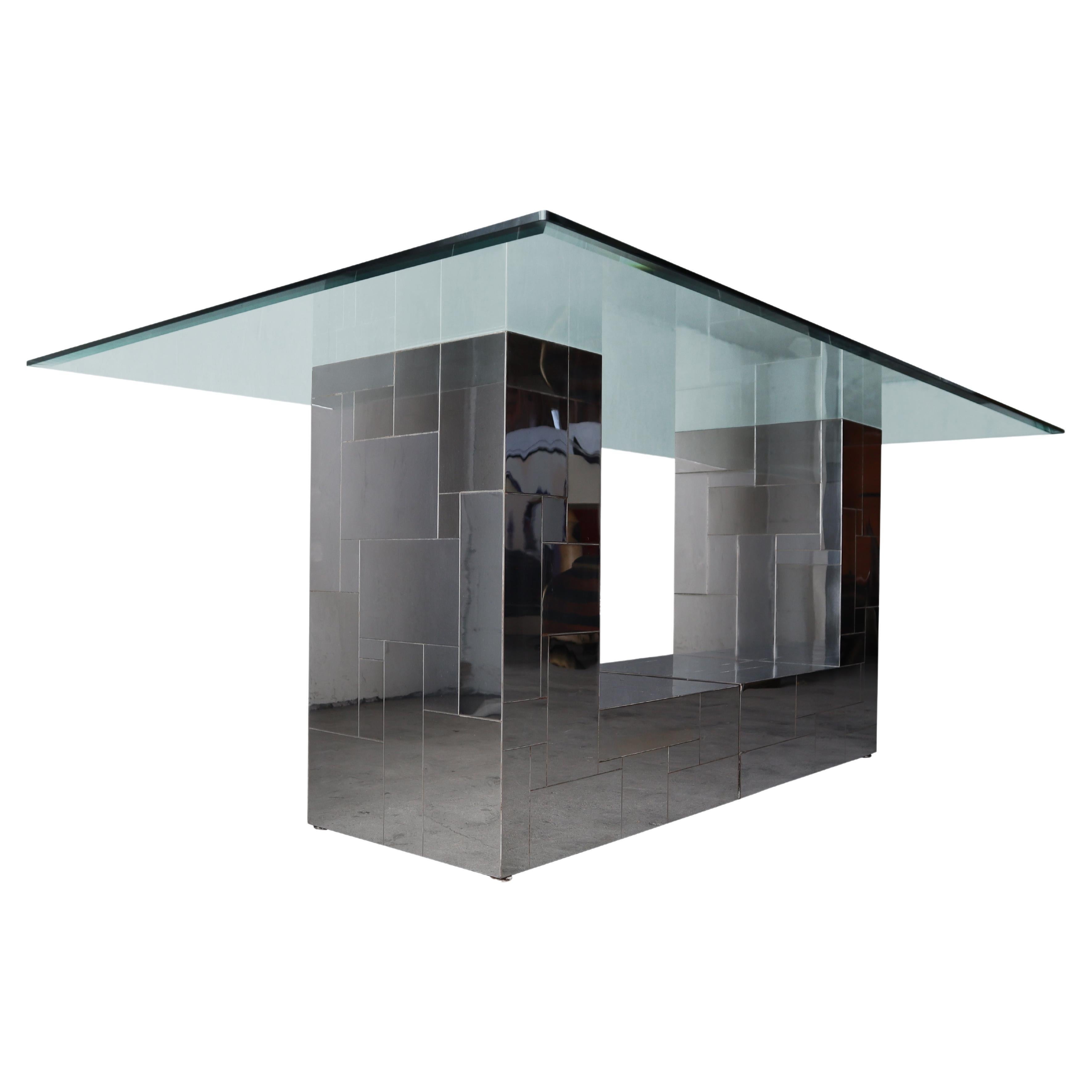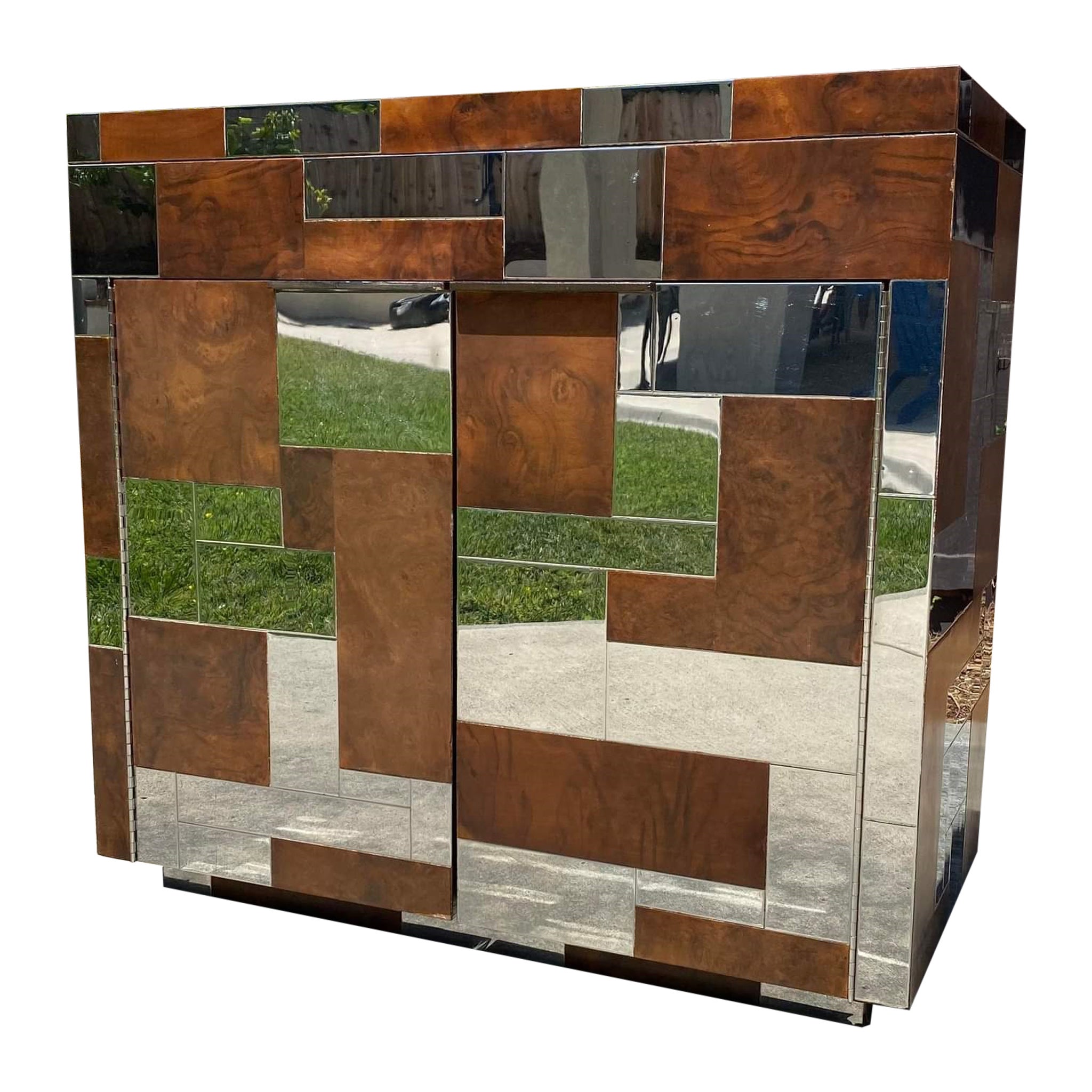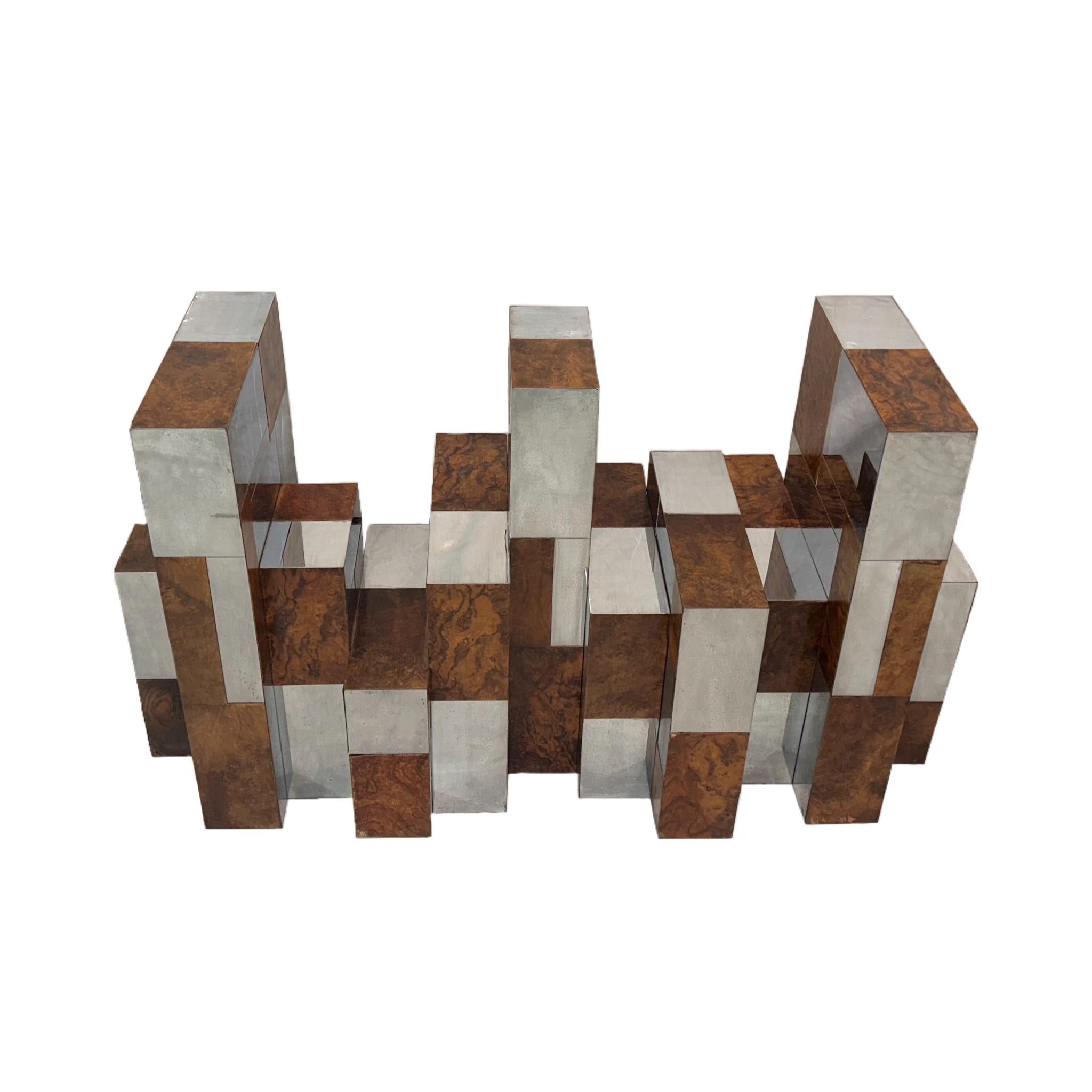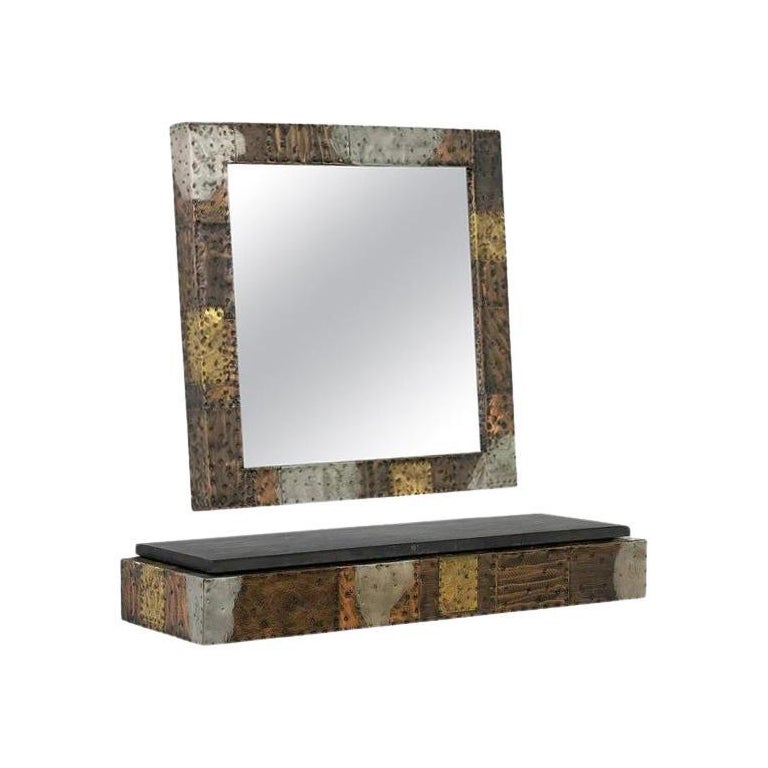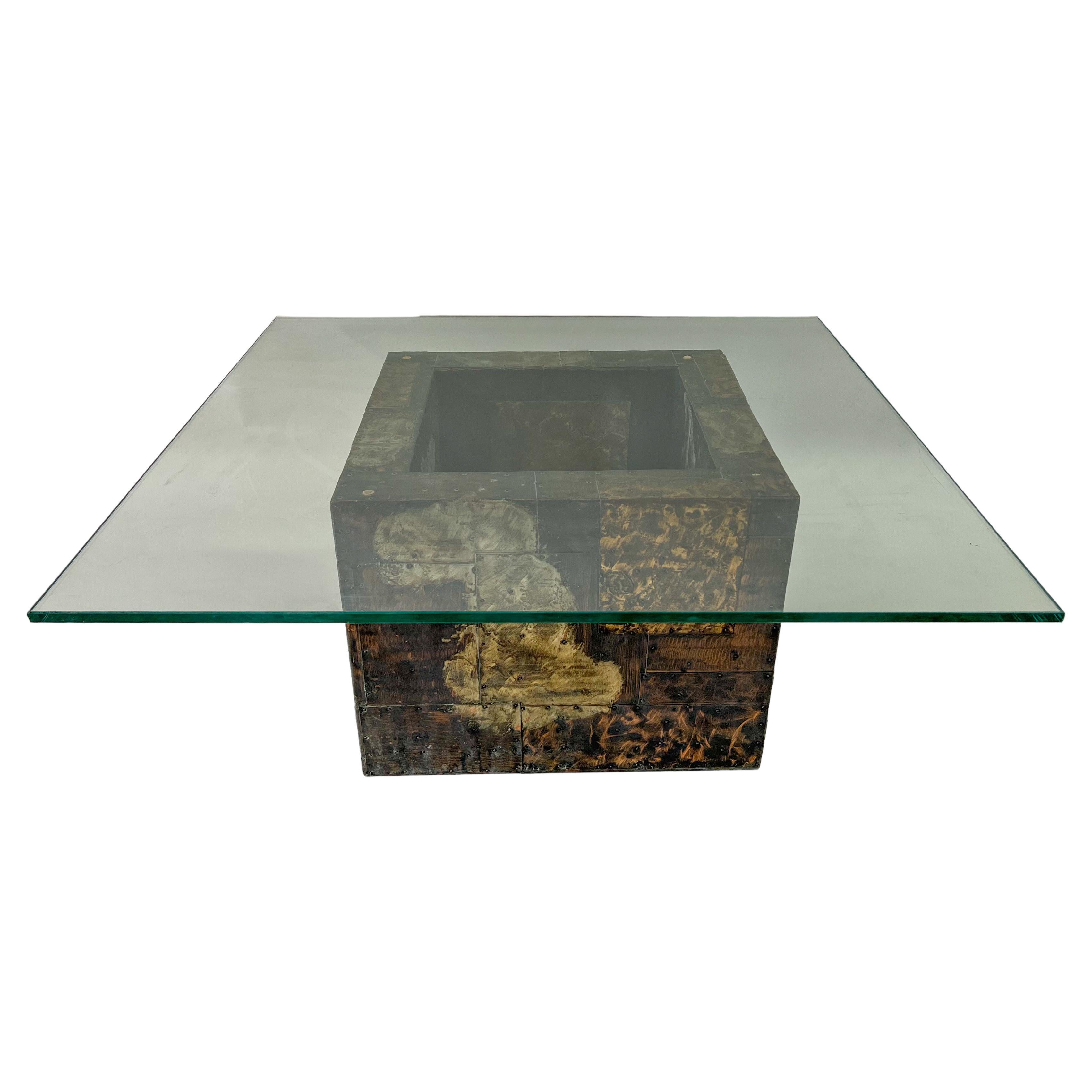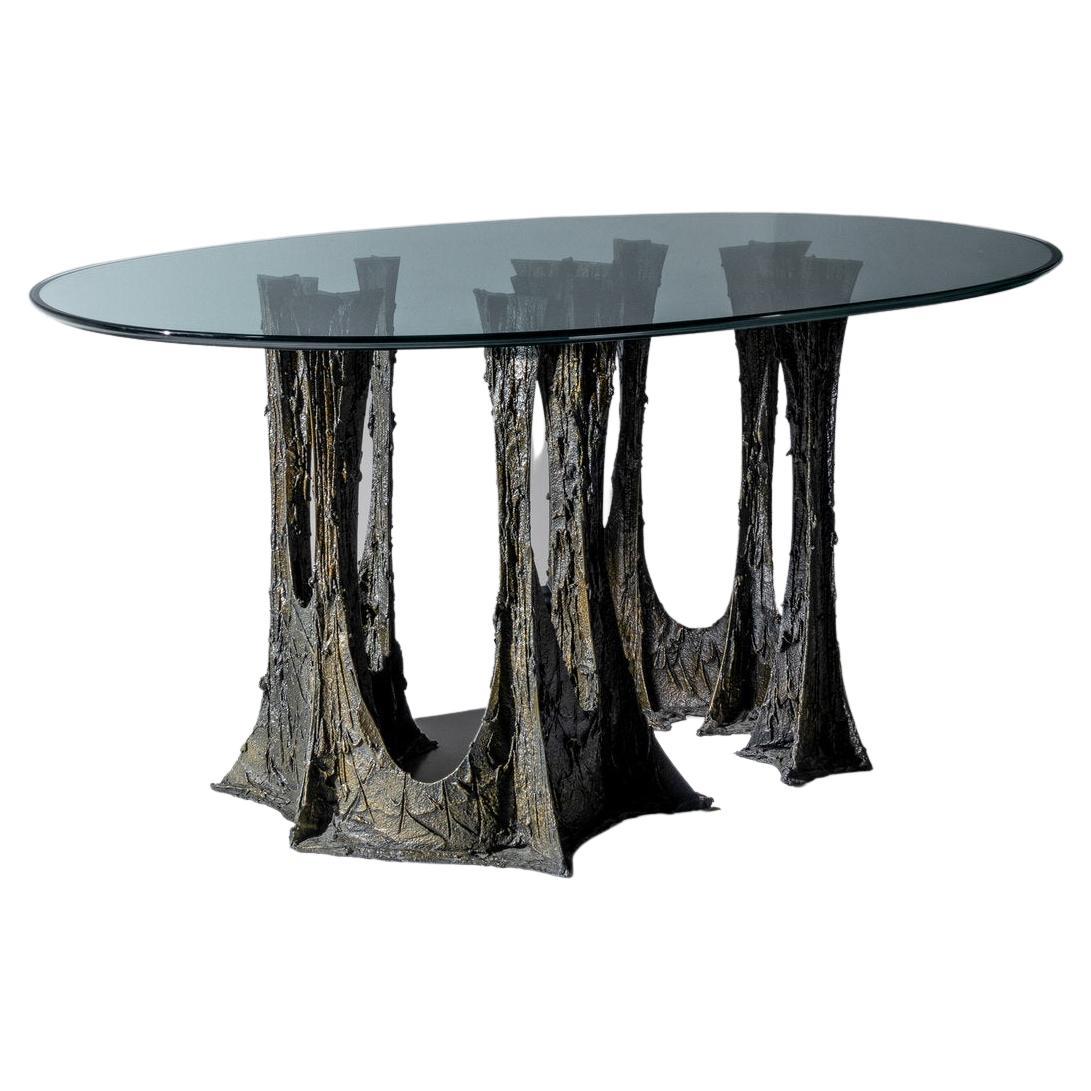
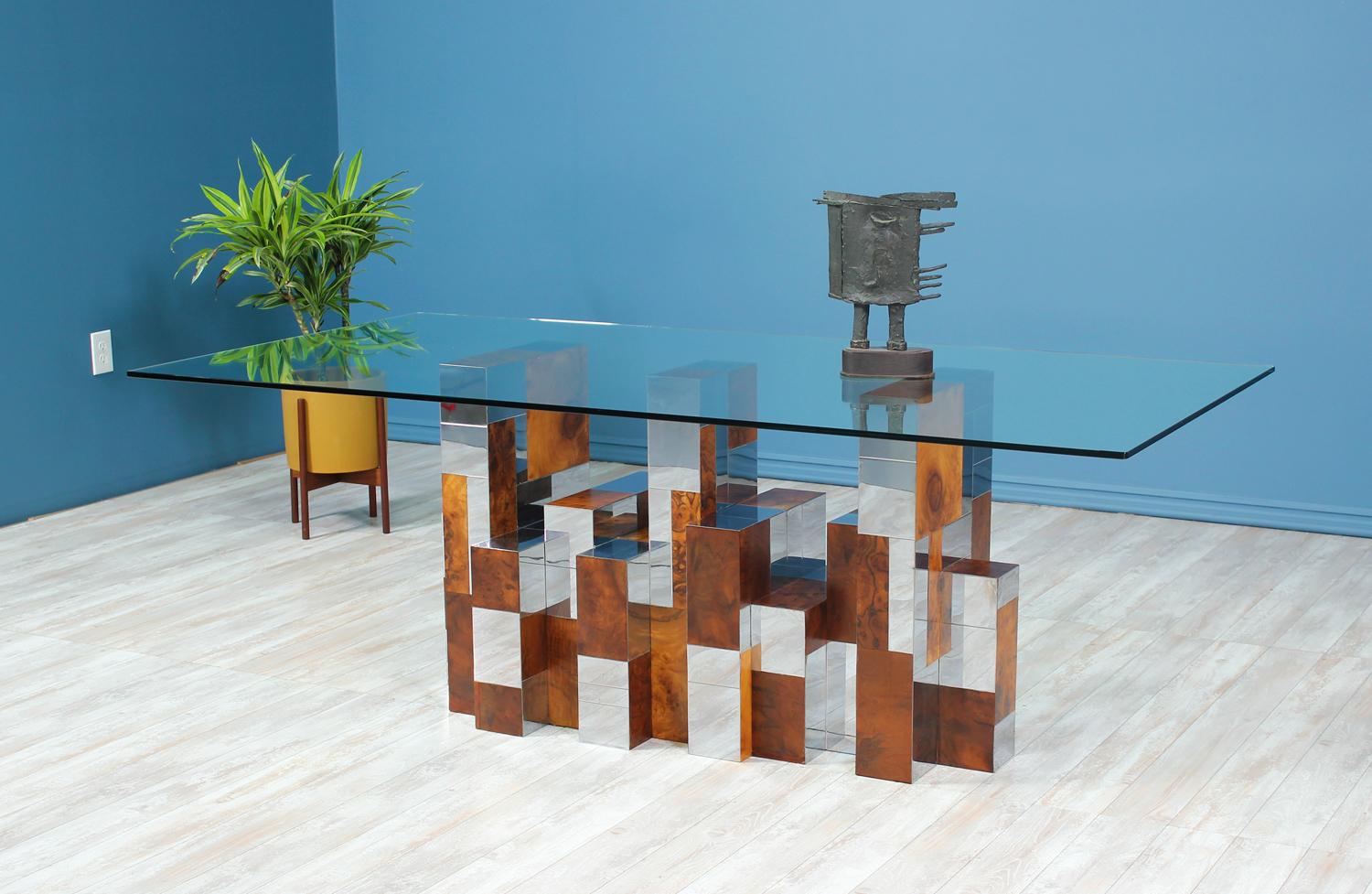
Cityscape SeriesBy Paul Evans
The Cityscape series — which includes the Cityscape dining table, the Cityscape coffee table and more — is revered today as a milestone in the history of brutalist design. The now-legendary collection was conceived in the 1970s by New Jersey–born, Pennsylvania–raised sculptor and furniture maker Paul Evans (1931–87), who began his career as a craftsman. Evans produced jewelry and hollowware before he turned toward making home furnishings and sculptural art, and with the Cityscape series he discovered a provocative middle ground between the two.
Just as the ornamented, welded and patinated steel panels of his Skyline cabinet in 1966 paid homage to urban architecture, Evans found inspiration in Manhattan’s dense clusters of buildings and window glass for the Cityscape series in the years that followed. An array of elongated rectangles and wide boxy forms characterizes the high-shine brass frame in a Cityscape settee, while chromed steel panels in the Cityscape dining table’s base mirror the innumerable glassy facades of midtown Manhattan’s skyscrapers.
Part of the multiple collections he designed for Directional Furniture beginning in 1964, Evans’s Cityscape line — with its pronounced geometric forms and bold patchwork merging of metal and burlwood — is expressive and wholly sculptural. Today, the series recalls a fascinating era for the craftsman and is immediately recognizable.
Shop Designs in the Collection

A designer and sculptor, Paul Evans was a wild card of late 20th century modernism. A leading light of the American Studio Furniture movement, Evans’s sideboards, credenzas, coffee tables and other work manifests a singular aesthetic sense, as well as a seemingly contradictory appreciation for both folk art forms and for new materials and technologies.
Evans’s primary material was metal, not wood, which was favored by his fellow studio designers, and Bucks County, Pennsylvania, neighbors George Nakashima and Phillip Lloyd Powell. He trained in metallurgy and studied at the Cranbrook Academy of Art, the famed crucible of modern design and art in suburban Detroit. For a time early in his career, Evans also worked at Sturbridge Village, a historical “living museum” in Massachusetts, where he gave demonstrations as a costumed silversmith.
Evans’s earliest work unites these influences. The pieces that made his reputation are known as “sculpted-front” cabinets: wood cases faced with box-like high-relief patinated steel mounts laid out in a grid pattern. Each mount contains a metal emblem, or glyph, and the effect is that of a brawny quilt.
Evans’s later work falls into three distinct style groups. His sculpted-bronze pieces, begun in the mid-1960s, show Evans at his most expressive. He employed a technique in which resin is hand-shaped, and later sprayed with a metal coating, allowing for artistic nuance in the making of chairs, tables and case pieces. Later in the decade and into the 1970s, Evans produced his Argente series for celebrated manufacturer Directional (a brand known to vintage mid-century modern furniture collectors everywhere): consoles and other furniture forms that feature aluminum and pigment-infused metal surfaces welded into abstract organic forms and patterns.
Last, Evans's Cityscape design series — a milestone in the history of brutalist design — meshed perfectly with the sleek, “high tech” sensibility of the later ’70s. Evans constructed boxy forms and faced them with irregular mosaic patterns that mixed rectangular plaques of chromed steel, bronze or burlwood veneer. These, like all of Paul Evans’s designs, are both useful and eye-catching. But their appeal has another, more visceral quality: these pieces have clearly been touched by an artist’s hand.
Find a collection of authentic Paul Evans furniture today on 1stDibs.

